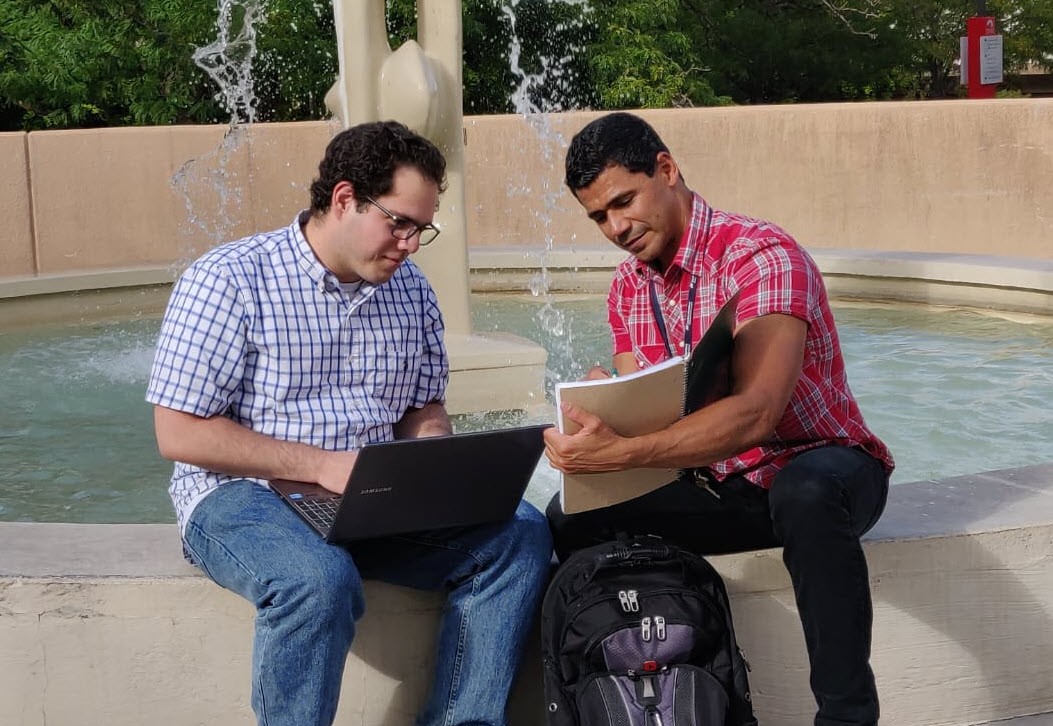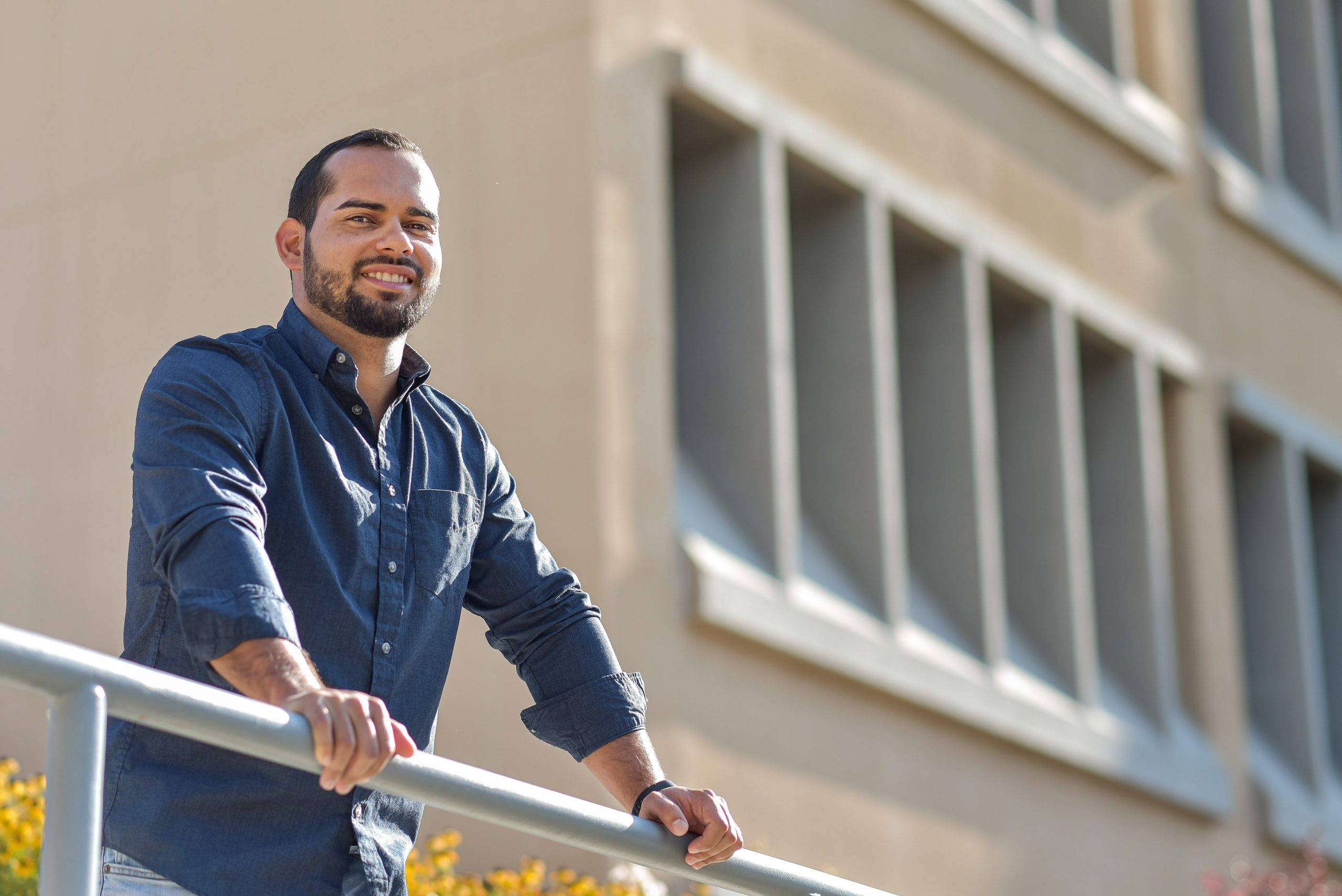ALBUQUERQUE, N.M. — For Edgardo Desarden Carrero, a student in the newly created electrical engineering doctorate program at the University of Puerto Rico, Mayagüez, his two summers working in resilient energy systems research at Sandia National Laboratories was his first internship. He is an unusual student in that he is also a professor of electrical engineering technology at the University of Puerto Rico, Aguadilla.

“I’ve been amazed at all the opportunities here to access equipment and interact with engineers who have a variety of backgrounds,” Desarden Carrero said.
The Consortium for Integrating Energy Systems in Engineering and Science Education, CIESESE, internship program, sponsored by the National Nuclear Security Administration, connects engineering students from five Hispanic-serving institutions, including UPRM, with research at Sandia and the National Energy Technology Laboratory. The program has recently been extended through next summer.
From 2017 to 2019, 41 students have worked in labs around Sandia, in departments including geomechanics and energy systems. Often, their work at Sandia becomes the focus of their graduate research and an opportunity for long-lasting relationships. So far, 10 students have become year-round interns at Sandia.
“For us, this program is critical to broaden our reach in terms of where we can get well educated students and Hispanic engineers,” said Tito Bonano, a senior manager at Sandia who helped forge the partnership with UPRM. He was born and raised in Puerto Rico, went to school at UPRM and is now a member of the industrial advisory board of the university’s engineering school.
According to the American Society for Engineering Education, UPRM awarded 528 undergraduate engineering degrees in 2017, second in the United States in terms of graduating Hispanic engineers. An agreement between Sandia and UPRM under development will ensure the institutions can continue to collaborate on projects.
“Our students are the promise of the present and the future,” said UPRM Chancellor Agustín Rullán-Toro. “We are always very proud to say they are the best of the best. They are talented young people eager to learn more. They have immense creative abilities and the passion to move forward. That’s why the combination of these two elements: the opportunities Sandia provides, plus the willingness of our students, has been a perfect recipe for success.”
Simplifying equipment to test inverter islanding
While at Sandia last year, Desarden Carrero met Sigifredo Gonzalez, an electrical engineer in the Distributed Energy Technologies Laboratory. Gonzalez introduced Desarden Carrero to the concept of islanding, a topic that is now the focus of his doctoral research.
Islanding happens when a power system, such as solar panels or a microgrid, continues to provide energy even when disconnected from the main electrical grid.
Islanded systems are dangerous to utility workers who are not expecting live wires during repairs, and they also pose safety risks when power returns to the main grid.
To address this problem, electrical engineers want the inverter, the component that transforms direct current produced by some islanded systems to alternating current on the grid, to detect a power outage and disconnect itself. Desarden Carrero is developing a virtual tool to test whether the inverter’s software to detect unintentional islanding complies with industry standards.
However, few labs have the large equipment needed for his tests. So, he’s developing a versatile system that is smaller, and hopefully less expensive, than current systems. The Power Hardware in the Loop system involves three major components: an inverter, a power amplifier and a computer. Together, these components are able to emulate different scenarios required by the standards.
Last summer, Desarden Carrero developed the computer controls for the simulated loads. Now he’s testing the system’s accuracy. “Ideally the smaller size and reduced cost could help make this equipment available to universities that do not have space for large physical equipment,” he said.
Varied applications of mechanical engineering coursework
Daniel Lizama Molina, a doctoral student in mechanical engineering at UPRM, came to Sandia with the CIESESE program in the summers of 2017 and 2018. Each visit he worked in the geomechanics department with geoscientist Hongkyu Yoon.

“I’ve worked on a different project each time I’ve been here,” Lizama Molina said. His first project involved three-dimensional simulations of mechanical properties of shale rock, information that is important for oil and gas extraction. “Now my project involves my specialty, machine learning and signal analysis,” he said.
At UPRM, Lizama Molina took several classes about analyzing the structure of signals from brain wave scans or information in each pixel of an optical or thermal image. Now, as a year-round intern, he’s applying that knowledge to challenges in geomechanics, particularly low-frequency sound signals produced by moving rocks. Lizama Molina is using software for acoustic wave signal analysis, much like programs for voice recognition, to analyze seismic event data.
He continues to teach his classes and supervise his students at UPRM, though the meetings happen online now. “I’m able to use the project management skills I’ve learned at Sandia for that work too,” Lizama Molina said.
Diversifying the future workforce
The CIESESE program is part of the National Nuclear Security Administration’s Minority Serving Institutions Partnership Program. The program aims to help develop diverse science and engineering workforce through internships and collaborations at national labs.
At Sandia, there are three specific internship opportunities that are part of this NNSA program. CIESESE works with primarily Hispanic-serving institutions. The Consortium Enabling Cybersecurity Opportunities & Research works with Historically Black Colleges and Universities. And the Tribal Colleges and Universities’ Advanced Manufacturing Network Initiative works with tribal colleges.
The institutional partners for the CIESESE program include UPRM, University of Turabo in Puerto Rico, University of New Mexico, University of Texas at El Paso and Miami Dade College. Student interns work at Sandia or the National Energy Technology Laboratory. This year, 16 students and four faculty fellows participated in the program.
Sandia is also developing a 10-year Cooperative Research and Development Agreement with UPRM so that the institutions can collaborate on projects.